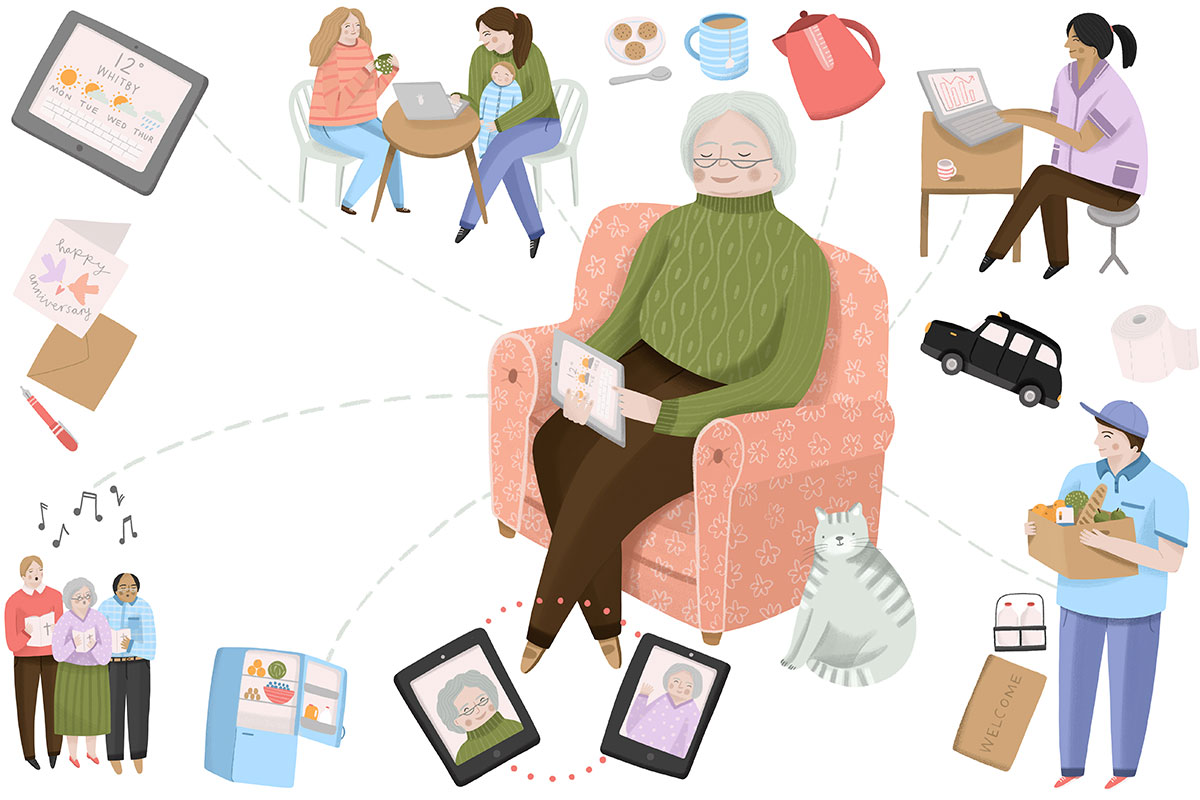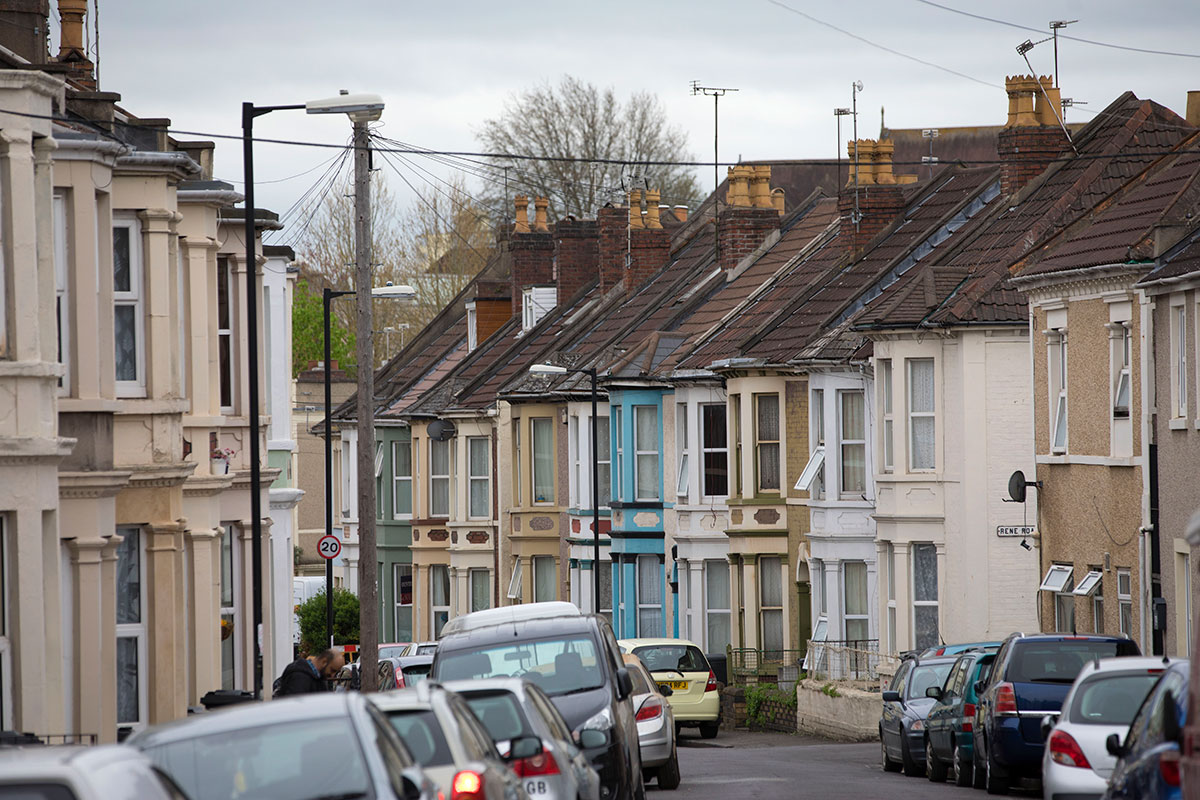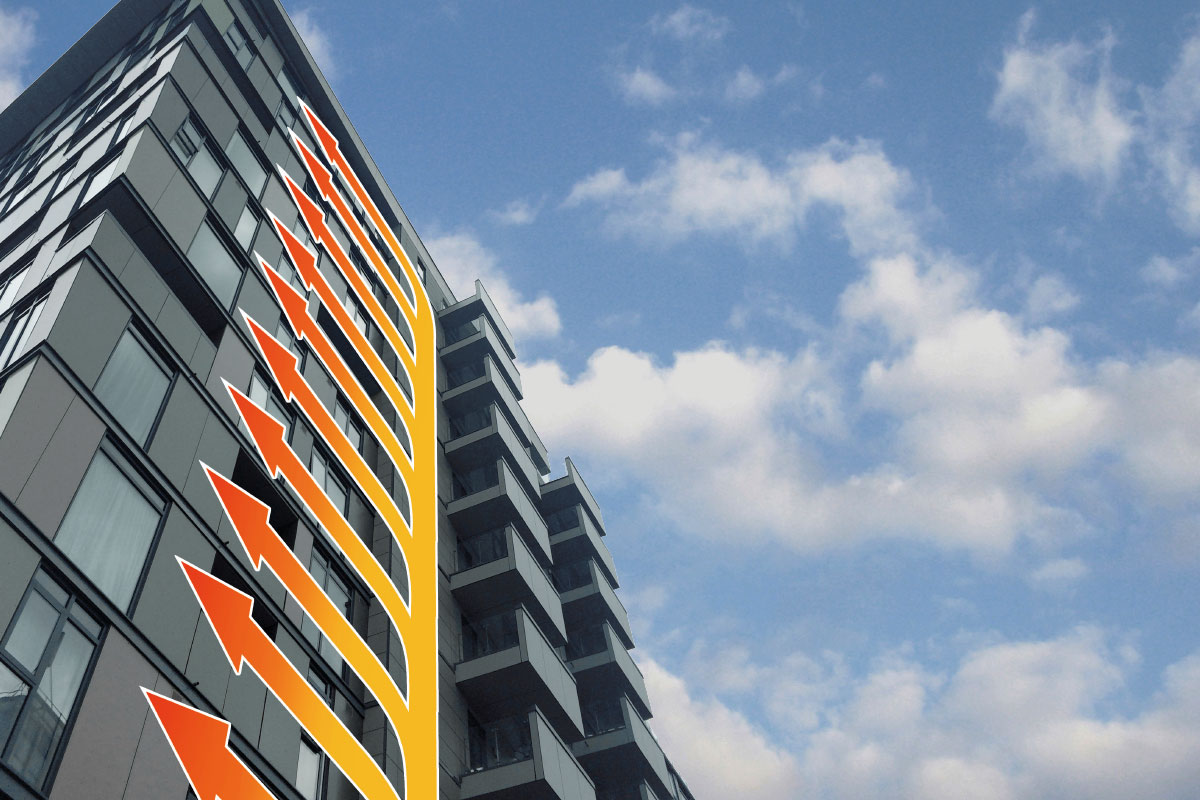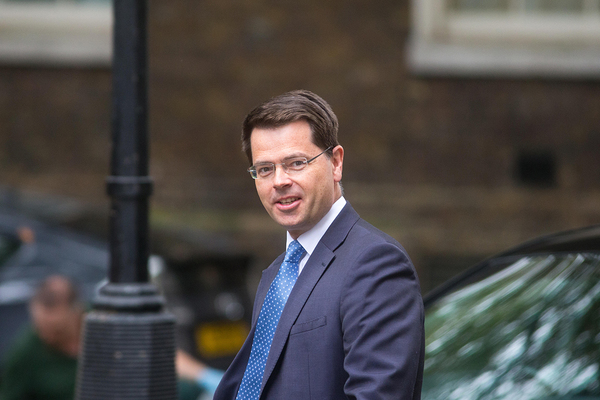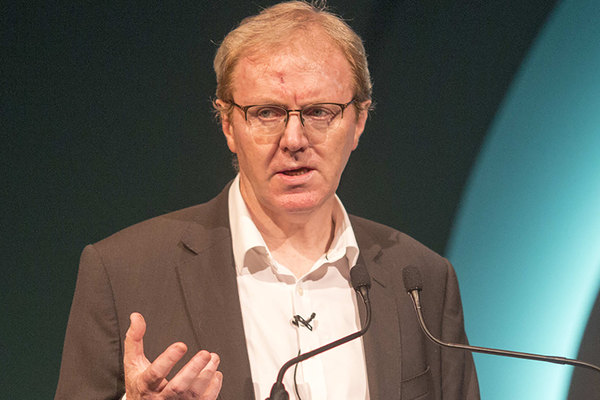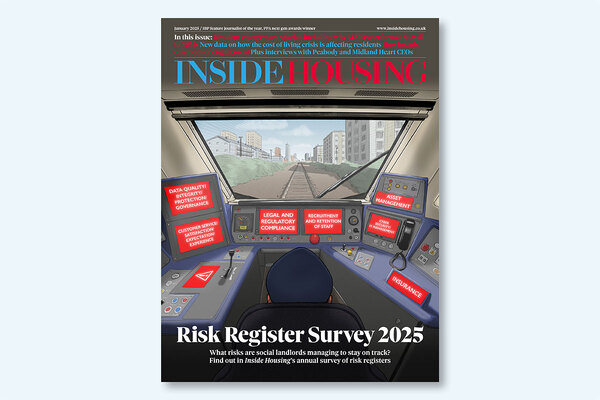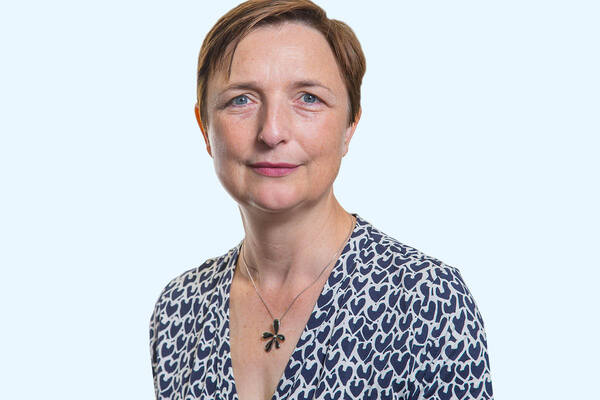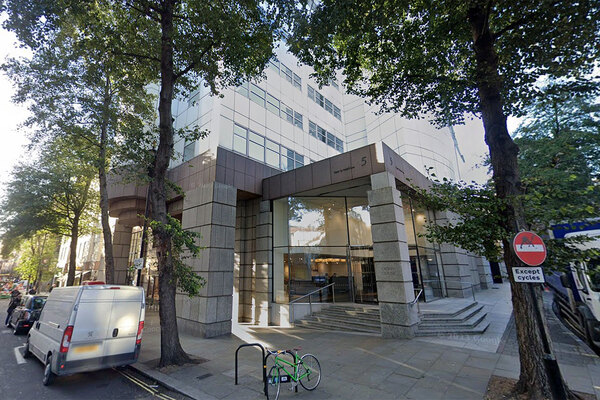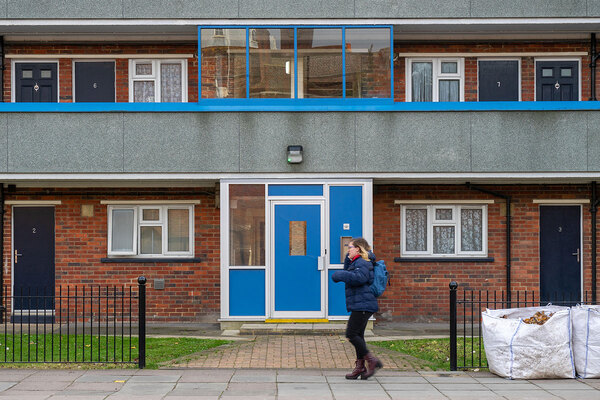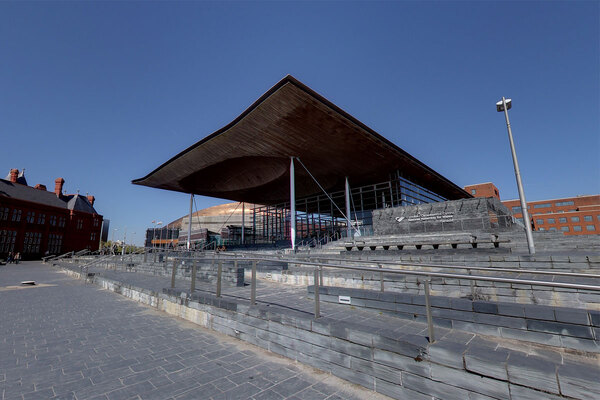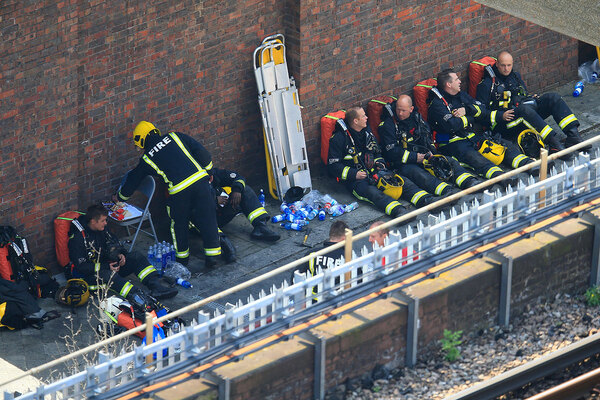You are viewing 1 of your 1 free articles
Using technology to make savings in the care sector
Technology has long promised savings to the care sector. Jill Stevenson looks at what options social landlords are taking up. Illustration by Lauren Radley
Most of us would baulk at the idea of a Big Brother monitoring system that clocked how often we went to the toilet, opened our fridge or made a cuppa. But for some older residents in the UK it’s a way of life – one which is allowing them to live more independently in assisted living facilities.
Sensors around the apartment are attached to a digital hub which provides a ‘bar chart of movement’ allowing carers to monitor activity over a particular period of time.
In doing so they can build up a picture of a resident’s current lifestyle.
"Sensors around the apartment are attached to a digital hub"
Family members can also log in to the web-based system, meaning, for instance, that it’s possible for a daughter in New Zealand to get reassurance by checking on her mother’s daily routine back in the UK.
The sensory system is one method of future digital care being used by private care providers and social landlords.
Another is an Alexa-type monitor currently being piloted by several local authorities, which not only allows older residents in remote communities to order in a meal from their local shop or get shopping delivered, but also have weekly church services piped into their home.
Yet another social landlord has developed its own app which, as well as resulting in more accurate care notes and less paperwork for staff, means important occasions, such as residents’ anniversaries, are rarely – if ever – forgotten.
All this technology has been around for a handful of years now, but it’s only recently that care providers and digital developers have begun to create coherent systems with clear benefits for the care sector.
Whether or not it’s affordable to smaller providers is another matter.
Richard Webb, corporate director of health and adult services at North Yorkshire County Council, would like to see “national pump-priming investment across health, social care and housing”.
He enthuses: “Artificial intelligence, robotics and other digital innovations could transform delivery of services in rural and coastal areas. The technology is there. It has the potential to change the conversations we are having about tackling loneliness, rapid access to assessment and diagnostics, protecting local hospital services and improving access to specialist services, as well as addressing some of our workforce challenges. The potential is massive.”
Still, not everyone is won over. Caroline Abrahams, charity director at Age UK, has mixed feelings about digitising care.
She says: “It is always important to remember that technology is no substitute for the human touch or for properly provided social care services.
“What people usually need most is practical help to undertake day-to-day tasks... Something that requires hands-on support from a trusted carer.”
Other reasons technology hasn’t been widely adopted could be financial, or that associations have been too busy getting their housing stock in order as well as trying to get their heads around Universal Credit.
So what technologies are out there – and are landlords taking them up?
Remote residents
North Yorkshire County Council has particular geographical difficulties in providing care to its older residents. With an area that takes longer to access east to west than it does to get from London to Birmingham, isolation could easily become a reality.
Fortunately communities benefit from an army of volunteers who fetch meals and ensure their older neighbours don’t go without. But in order to prevent volunteer burnout, the council is currently piloting an Echo Show-type device. It’s the basic Echo speaker (the virtual assistant you can ask for a weather update etc) with a camera, screen and touchpad added. It gives older people living in their own homes the ability to order a meal or get shopping delivered from their local store.
“We’re not financially capable of getting companies such as Deliveroo or Hungry House to deliver a hot meal every day to our residents, so we’re giving them the ability to order locally from small stores where they know the staff and the foodstuffs etc they stock,” says Richard Webb.
“They can also have local church services piped into their home and in future probably council meetings. We’re also considering a community newsletter idea. The idea is to combine IT with care to give people independence and allow them to stay in their homes for longer.”
The council has spent the past 13 years investing in broadband infrastructure, with around 95% of the population currently using superfast broadband. Another £15.1m is to be spent on rolling out next-generation digital services. Norfolk and Hampshire county councils are two other remote areas currently piloting a similar system.
At present the Alexa-type technology, which includes a screen, is being trialled in the remote village of Sleights near Whitby. If successful there are plans to scale it up to a further 1,500 homes in the village.
Better record-keeping
Sanctuary Care – an arm of housing association Sanctuary – has developed a bespoke app for use in the company’s care homes. Called Kradle, the app provides online care notes where staff can update residents’ records the minute they finish their shift, meaning information is less likely to be forgotten.
Families can also be reassured instantly that, for example, a taxi has been booked for their relative’s hospital appointment the next day.
The app has been piloted in three care homes and will be rolled out over the coming months to a further 100. Its success has been attributed to the fact that staff were pivotal in its development. Jemma Robinson, programme manager for the care business transformation team at Sanctuary which is rolling out the app, was a care home manager herself for five years.
“Because the team involved in its development had all worked as carers we knew exactly what we needed the app to do,” she says. “There are fundamental issues with paper, not least the time it takes to read through notes and make decisions. The app will alert us instantly if it’s someone’s wedding anniversary, for instance. That may seem like a little thing to you or me, but it can be a huge deal to a resident and make the difference between them having a good day or feeling out of sorts.”
All staff were asked to take part in the pilot project over a period of one year.
Ms Robinson adds: “We were aware, of course, that people who come in to work in a care role aren’t necessarily au fait with IT – or even want to be – so there was intensive support for staff, including a ‘championship scheme’ where a ‘super user’ was appointed to each home to provide mentoring.”
Monitoring
Appello is the UK’s largest monitoring company, providing services to housing associations, local authorities and the private sector. Its ‘end-to-end digital solution’ is currently being used by around 100 of Housing & Care 21’s assisted living developments, with another 600 due to benefit as the scheme is rolled out.
“We realised a couple of years ago with the pull-cord-and-push-button alarm system that an increasing number of calls were failing first or even second time round before they reached us,” says Tim Barclay, chief executive at Appello. “It’s not surprising since these analogue systems were working on signalling protocols which were established around 50 years ago.
“As well as failing a lot, the calls were also taking up to 90 seconds to reach us. That just wasn’t a good enough experience for elderly or vulnerable people living in residential and community living environments.”
The new system means calls take just three to four seconds to reach the centre, multiple alerts can be received from the same community and the calls themselves are of a much higher quality.
Features such as video door entry can also be added to the system to make residents feel more secure, while video room-to-room calling gives residents in community blocks a much more inclusive feel.
A survey the company did on 500 residents who had experienced the new system came back with the result that 90% felt less isolated, and happier as a result.
“The video calling was particularly popular in communal areas,” adds Mr Barclay. “Residents could be in the coffee lounge and call the rooms of friends to ask them to come down and join them. Others would be popping out to shops and asking if their neighbour wanted anything fetched for them.”
Sensors to monitor movements are an additional feature that can be added onto the digital system – at around £3 a week. This gives a housing provider the evidence needed to approach health and social care teams to show that a resident with, for example, advanced dementia, requires advanced services or even a different living arrangement.
The way the monitors work is to build up a picture of a resident’s daily routine. Monitoring how regularly the fridge is opened, the kettle put on or the kitchen accessed would give carers an idea of whether or not the resident is eating properly, while visiting the toilet five times a night could indicate a urinary tract infection.
This type of monitoring can also allow housing providers and local authorities to tailor care services more effectively by pinpointing exactly when the care is needed.
